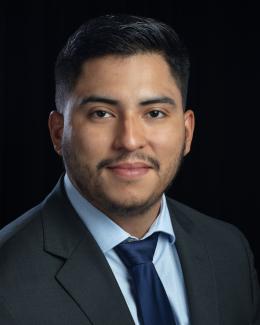
Bio
Dr. Daniel Orea is an R&D Associate in the Energy Systems Development Group within the Nuclear Energy and Fuel Cycle Division at Oak Ridge National Laboratory. His research areas include experimental and computational thermal-hydraulics related to nuclear energy systems. He also supports the development of molten salt technology by performing two-phase flow measurements using non-intrusive optical techniques for model validation.
Dr. Orea's background stems from a B.S. in Physics, M.S. in Nuclear Engineering, and a Ph.D. in Mechanical Engineering. While working on his Master's, Dr. Orea studied experimental flow mixing effects in the cold-leg of a PWR using Particle Image Velocimetry (PIV) and Laser Induced Fluorescence (LIF) that served as a benchmark for CFD uncertainty quantification. His Ph.D. research focused on the internal pressure and temperature measurements of an annular wick heat pipe for model development and micro-reactor applications.
His major projects and accomplishments include:
- Cold Leg Mixing CFD-UQ Benchmark: conducted experiments to analyze fluid velocity and concentration in the presence of buoyancy effects using Particle Image Velocimetry (PIV) and Laser Induced Fluorescence (LIF)
- Development of Measurement Techniques for Quantifying Fission Product Transport in a Gas-cooled Fast Reactor under the Versatile Test Reactor (VTR) program.
- Experimental determination of suitable LIF dye in molten salt for natural circulation and force flow full field temperature measurements.
- Internal pressure and temperature measurements in a wrapped wick annular heat pipe using high-accuracy pressure transducers and Optical Fiber Distributed Temperature Sensors (OFDTS).
Professional Experience
His experience outside of academia includes internships at Sandia National Laboratory (SNL) where he used the higher fidelity STAR-CCM+ to calibrate the lower fidelity COBRA-TF, Idaho National Laboratory (INL) where he worked on a preliminary design for a helium cooled cartridge closed loop that was planned to be used for the testing of nuclear fuel and materials, and Kairos Power where he evaluated effective thermal conductivity models for a single fuel pebble by applying a multi-level homogenization scheme.
Education
Ph.D. in Mechanical Engineering from Texas A&M
M.S. in Nuclear Engineering from Texas A&M
B.S. in Physics from Stephen F. Austin State University

